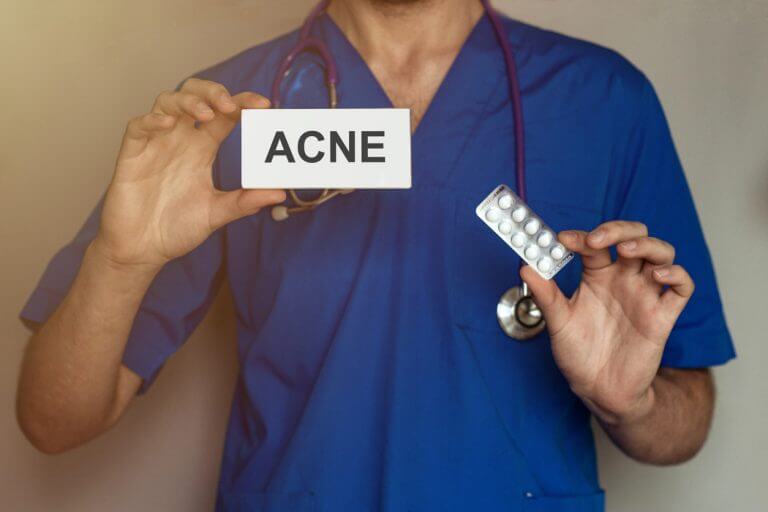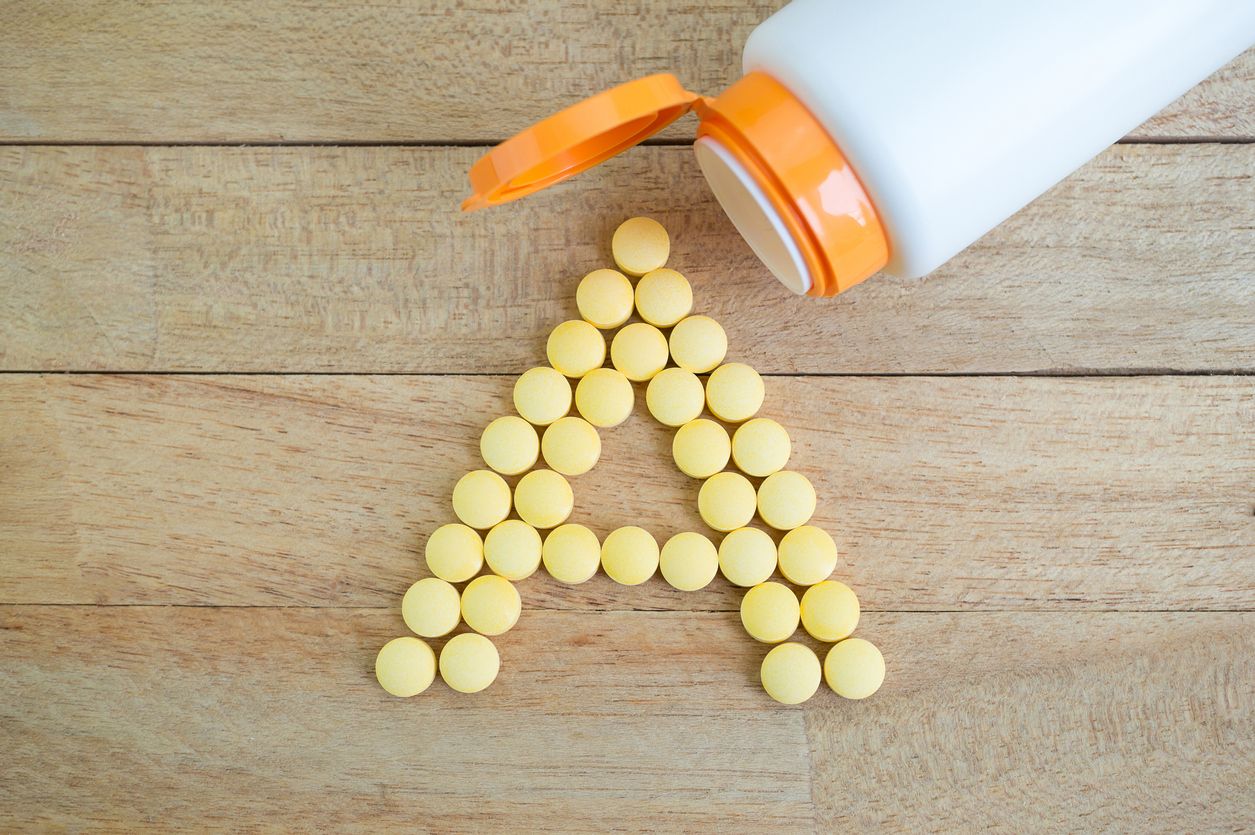- Home
- Trend
- Weight Loss Strategies
- Acne Tips
- Hair Health Information
- Blemish Removal Tips
- Acne Scar Removal Tips
- Muscle Building Techniques
- Intimate Care Tips
- Postpartum Intimate Care
- Eye Bags Wiki
- Tips for Face Slimming
- Secret of Permanent Hair Removal
- Breast Enlargement Tips
- Cure to Snoring
- Marionette Lines
- Skin-Tightening Secrets
Retinoic acid (commonly known as Retinoic Acid) is often hailed as the ultimate weapon against acne and comedones, but its numerous side effects also make many hesitate. If you struggle with acne-prone skin, it's important to understand how retinoic acid works and its possible side effects. Surprisingly, oral retinoic acid might not even be effective against closed comedones!
What is Retinoic Acid?

Retinoic acid is a derivative of vitamin A, also known as isotretinoin. It’s important to distinguish whether we’re referring to oral retinoic acid or topical retinoic acid creams. As a prescription drug used to treat acne, blackheads, comedones, folliculitis, and keratinization disorders, it's often seen as the “ultimate weapon” for acne. However, while it is highly effective, its side effects are equally powerful. Let’s dive in!
How Retinoic Acid Works
To understand how retinoic acid treats acne, we need to first understand how acne forms. The three main causes of acne are:
1. Excessive sebum production
2. Overgrowth of Cutibacterium acnes (acne bacteria)
3. Abnormal keratinization (cell turnover)
The typical development of acne follows this process:
• Due to genetics, poor cleansing, a damaged skin barrier, or an unhealthy diet, the sebaceous glands secrete too much oil.
• This creates an ideal environment for acne bacteria to proliferate.
• Meanwhile, abnormal keratinization causes dead skin to build up and clog pores. The clogged follicles, filled with bacteria and oil, lead to inflammation, forming blackheads, whiteheads, and pimples.
Pharmacological studies show that retinoic acid works through the following mechanisms:
1. Shrinks sebaceous glands, reducing oil production
2. Decreases acne bacteria that rely on oil to thrive
3. Promotes differentiation of keratinocytes and speeds up skin metabolism
4. Reduces inflammation and has anti-aging effects
5. Helps break down melanin (pigmentation)
Because of these five mechanisms, both oral and topical retinoic acid are commonly prescribed by dermatologists as frontline treatments for acne and severe blackheads. They address the root causes—excess oil and inflammation—and can prevent acne and comedones from forming. However, retinoic acid is a prescription drug with significant side effects and is not suitable for everyone.
Types of Retinoic Acid

1. Oral Retinoic Acid
Oral retinoic acid is a potent treatment for severe acne and cystic acne. It must be prescribed by a dermatologist and is generally reserved for patients who have not responded to oral or topical antibiotics. The dosage is based on the severity of the condition and the patient's body weight.
Standard dosage formula:
0.5 mg per kg of body weight per day, taken once or twice daily, for a course of 15–20 weeks.
Dosage may be adjusted during follow-up visits and can go up to 2 mg/kg/day if needed.
The drug must accumulate in the body to be effective, so dermatologists calculate the total cumulative dose required. Recent practices support low-dose, long-term regimens (e.g., 0.5 mg/day for 6 months), which still produce significant results while reducing side effects.
2. Topical Retinoic Acid Cream
Topical retinoic acid is a milder option that helps regulate follicular metabolism and prevent pore blockages. It is used to treat and prevent comedones, blackheads, and acne. The dosage and frequency depend on your skin condition. It can be used alongside oral retinoic acid or as part of a long-term skincare regimen.
Topical retinoic acid creams are prescription-only and considered quite strong. However, over-the-counter skincare products often contain vitamin A derivatives like retinol, retinaldehyde, and retinyl esters. These compounds convert to retinoic acid through a metabolic chain: retinyl ester → retinol → retinal → retinoic acid, which takes more time and yields milder effects.
免費體驗
Acne Treatment
1 Minute Self-Registration
Date should not be before minimal date
Generations of Retinoic Acid and Their Effects
First Generation (e.g. Tretinoin, Isotretinoin, Alitretinoin)
• Highest concentration
• Strong skin irritation and higher risk of side effects
• Higher likelihood of causing retinoid dermatitis
Second Generation (e.g. Motretinide, Etretinate, Acitretin)
• Lower concentration
• Mainly oral use with fewer side effects
Third Generation (e.g. Adapalene, Tazarotene, Bexarotene)
• More stable, less irritating
• Currently the most commonly prescribed types
• Effective against comedones with fewer side effects
Since skin responses vary, it's necessary to test which generation suits you best. Studies show that third-generation retinoids work faster, are less irritating, and more stable. Though equally effective as the first generation in the long run for mild to moderate acne, they tend to be better tolerated.
Retinoic Acid Has Limited Effectiveness on Closed Comedones
Some studies indicate that about 20% of patients relapse within two years after completing a full course (120–150 mg/kg cumulative dose) of oral retinoic acid and require another round. Furthermore, oral retinoic acid is not very effective against closed comedones and microcystic acne.
Side Effects of Retinoic Acid
Retinoic acid is typically reserved for moderate to severe acne cases and is only prescribed when other treatments have failed. However, it has a long list of side effects and should not be used carelessly. It also isn’t cheap.
Not suitable for:
• Pregnant or breastfeeding women, or those trying to conceive
• People with impaired liver function
• Individuals with high cholesterol or triglycerides
• People with vitamin A toxicity
• Those allergic to isotretinoin or its components
• Patients on oral antibiotics
Possible side effects:
1. “Initial breakout” phase
2. Dry skin and mucous membranes
3. Possible liver and lipid profile disruptions with long-term use
4. Risk of birth defects
5. Night blindness, photophobia, and visual disturbances
6. Increased risk of ulcerative colitis
7. May cause excessive scarring or keloids
How long until it works?
• Oral retinoic acid: noticeable improvements usually seen after 1 month
• Topical retinoic acid gel: typically shows results in 3–4 months
免費體驗
Acne Treatment
1 Minute Self-Registration
Date should not be before minimal date
Retinoic Acid "Initial Breakout" Phase
Some patients experience a worsening of acne initially—this is known as the “initial breakout phase.” Signs include:
• Deep, inflamed pustules
• Yellow-tipped pimples on the surface
• Warmer skin temperature
• Possible systemic symptoms like fever, headache, and joint pain
• Weak or no response to antibiotics, but good response to steroids
Treatment can continue during this phase with supportive meds to reduce inflammation or be paused based on the doctor’s evaluation.
Retinoic Acid Do's and Don’ts
Do:
• Take with fatty foods to improve absorption
• Get liver function tests before starting, one month after, and every 3 months
• Use heavy moisturizers on face and lips
• Use SPF 30+ sunscreen daily and physical sun protection
• Practice strict birth control two months before and three months after treatment
Don’t:
• Donate blood or breastfeed while taking retinoic acid
• Undergo any cosmetic treatments (e.g. lasers, microneedling) until at least 6 months after stopping
• Supplement additional vitamin A—risk of toxicity
• Drive at night if experiencing impaired night vision
• Use tanning beds or sunbathe
• Combine with oral antibiotics
Retinoic Acid Isn’t for Everyone — Try Acne Treatments First
While powerful, retinoic acid isn’t a go-to treatment for every case. Before resorting to it, try other options like Perfect Medical’s signature Acne Treatment.
This non-invasive, painless treatment uses vacuum microdermabrasion with customized suction heads and purifying serums to exfoliate dead skin, clear pores, and dissolve comedones. It deeply cleans and hydrates the skin—like a facial spa treatment—and clears out blockages that cause closed comedones.
The unique purifying formula also penetrates deeply, stimulating collagen production, balancing oil and moisture, and accelerating healing of acne lesions. It repairs redness and skin damage from comedones, cystic acne, and pustules.
Before turning to strong oral medications, explore your options. You can try this treatment for free, complete with a skin analysis—click the link below to sign up in just one minute!
Try it for Free: Perfect Medical Acne Treatment免費體驗
Acne Treatment
1 Minute Self-Registration
Date should not be before minimal date
FAQ

Where can I buy retinoic acid cream?
It’s a prescription drug. You’ll need a dermatologist’s assessment to obtain it. However, OTC skincare products with retinoids like retinol, retinaldehyde, and retinyl esters are available. These convert slowly into retinoic acid in the skin, with gentler effects and fewer side effects.
Can retinoic acid permanently cure acne?
Not always. Even after completing a full course (120–150 mg/kg), around 20% of patients relapse within two years. Oral retinoic acid also isn’t very effective on closed comedones or microcystic acne.
Can severe acne affect mental health?
Yes. Studies show acne-related depression can be worse than cancer-related depression. Persistent acne can disrupt adolescence, lower self-esteem, and negatively impact social relationships and personality development.
What is retinoic acid dermatitis? Is retinoic acid photosensitive?
It can cause red, itchy, dry, peeling skin—known as retinoid dermatitis. retinoic acid itself isn’t photosensitive, but it's degraded by sunlight and reduces the skin’s oil barrier, increasing sun sensitivity. Therefore, use topical retinoic acid only at night and practice strong sun protection.









